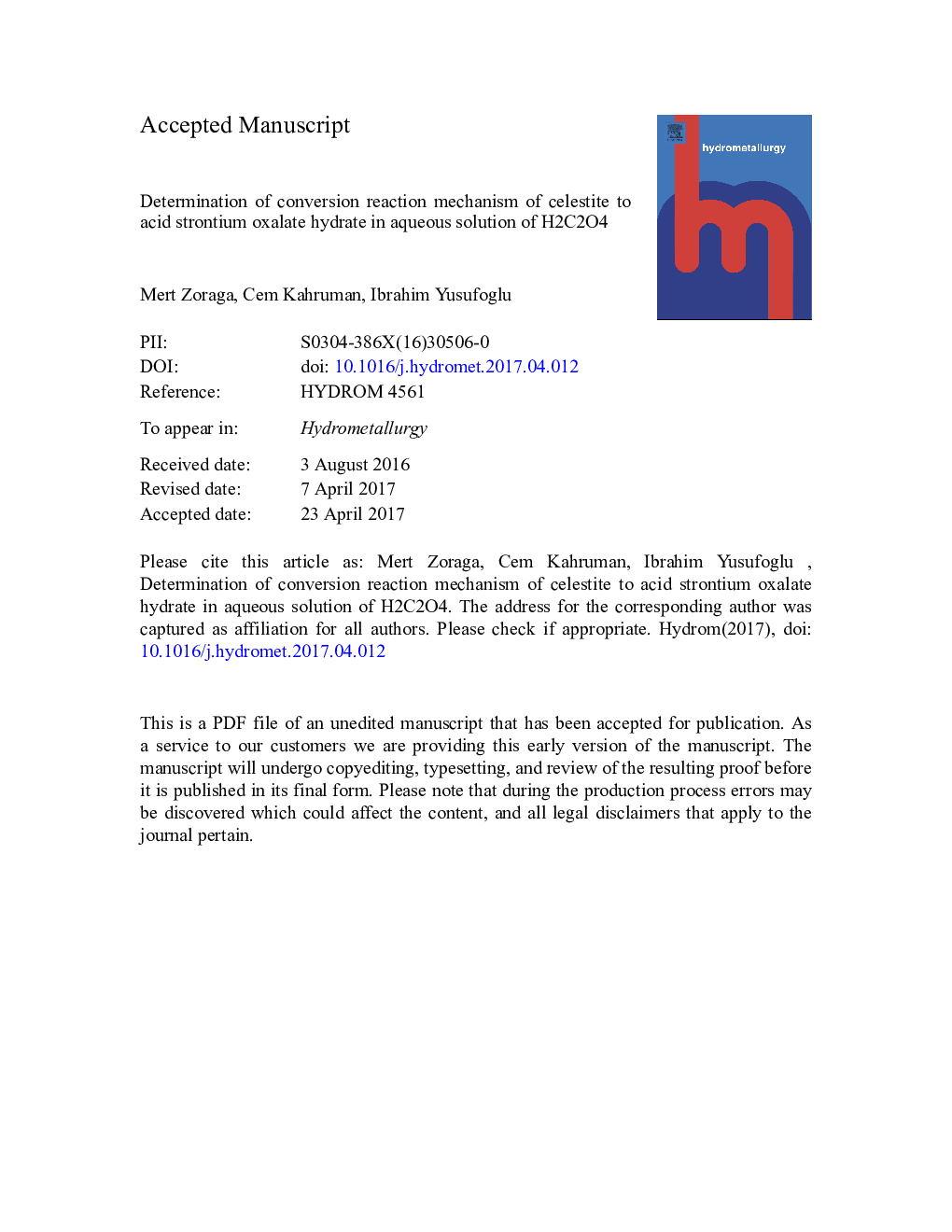| Article ID | Journal | Published Year | Pages | File Type |
|---|---|---|---|---|
| 4769259 | Hydrometallurgy | 2017 | 24 Pages |
Abstract
The conversion of celestite to acidic strontium oxalate in H2C2O4 solutions proceeds in two consecutive reaction steps. In the first step, SrC2O4·H2O is formed and in the second, H[Sr(C2O4)1.5(H2O)] is formed. The conversion reaction ends by the formation of SrC2O4·H2O on the surfaces of the celestite particles. The saturation concentration of H[Sr(C2O4)1.5(H2O)] chelate compound decreases during cooling of the solution and the excess amount of Sr(HC2O4)(C2O4)0.5·H2O crystallizes. XRD, ICP - OES and simultaneous TG/DTA - MS analytical techniques were used to explain the conversion reaction mechanism.
Related Topics
Physical Sciences and Engineering
Chemical Engineering
Chemical Engineering (General)
Authors
Mert Zoraga, Cem Kahruman, Ibrahim Yusufoglu,
